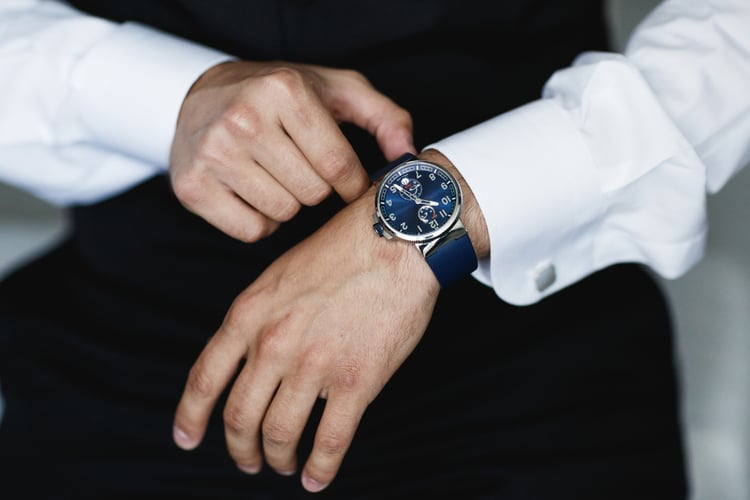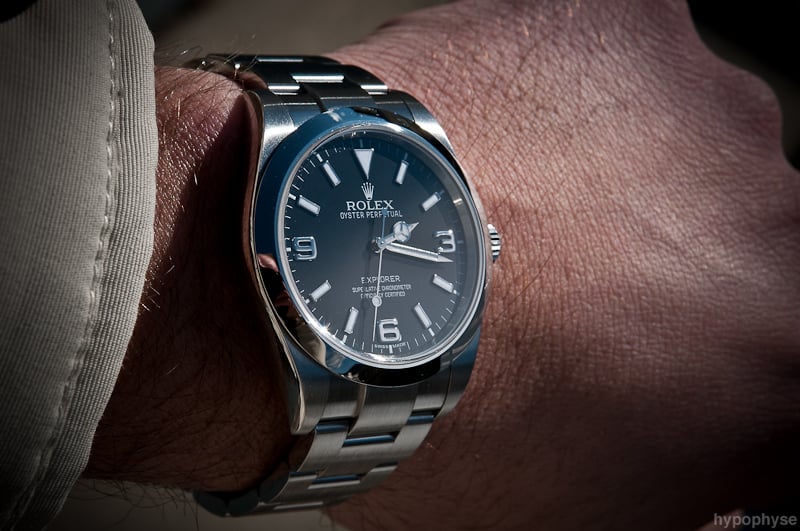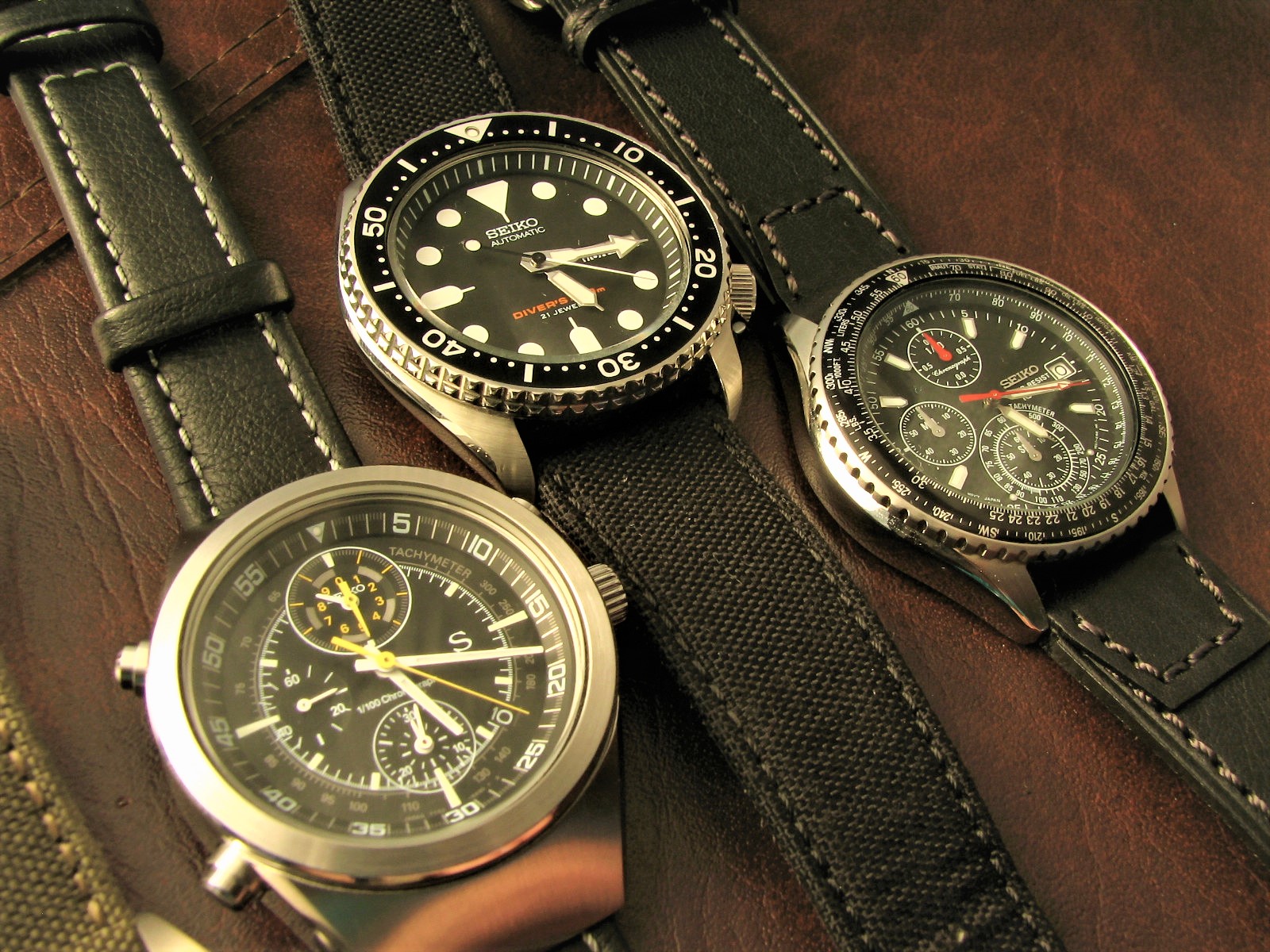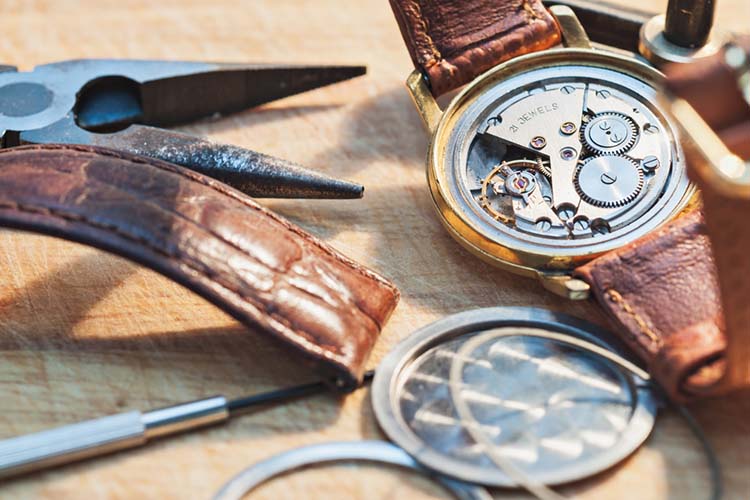Although it may seem like a basic concept for any watch enthusiast, getting a watch band with proper sizing is vital to wearing a watch that is both comfortable and attractive on your wrist.
With the sheer variety of watches available on the market, there is certainly a model for everyone and a perfect fit for every wrist. You could get the most excellent watch in the world, but if it doesn’t fit your wrist correctly, it will not do the watch or you any justice.
Finding a watch that fits, or making the necessary adjustments to get the proper fit, is essential to look like a watch connoisseur and not like someone wearing someone else’s timepiece. This quick guide aims to give you the information surrounding watch sizing and how tight your timepiece should be to look right for your wrist.
Table of Contents
Getting the Right Size Watch Band for Your Wrist
How to Know if Your Watch is Too Tight
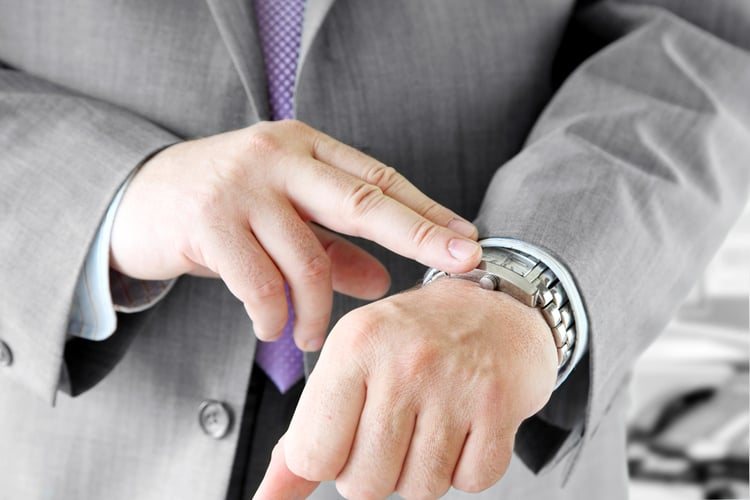
Unlike certain clothes, watches should not be worn tight, some people mistakenly wear their timepiece too tight and that can be bad for your wrist, circulation and overall comfort level.
Contrary to this point, watches are designed to be ergonomic, they are created to fit nicely on a wrist, so lean more to the tighter than the looser side.
However, what is defined as too tight is very subjective, and it can depend on your preference, but if you feel like you have a lower motor function in your wrist and your veins are popping out, it might be worth loosening your timepiece.
It is important to note that your watch will feel tighter when it gets hotter due to your wrist swelling in the heat. So what fits in the summer or a hotter climate may not fit comfortably in colder weather, or vice-versa.
One obvious way to tell your watch is too tight is if it pinches your skin or you can’t move it slightly back and forth on your wrist. In the image above, you can see the case and bracelet are pushed tight up against the wearer’s skin and the crown is digging into his wrist. This is a good indication the watch is too tight and would most likely be uncomfortable to wear it like that for any long period of time.
How to Know if Your Watch is Too Loose
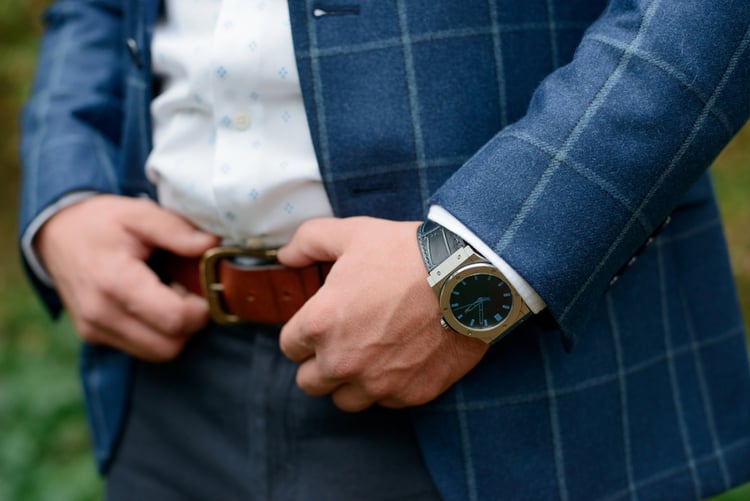
It is often easier to determine if a watch is too loose as opposed to too tight, and this is because the watch will be moving up and down your wrist rather than staying fixed on your wrist. With your arm at your side, the watch will rest on the top of your hand, rather than around your wrist bone – as seen in the image above.
If your watch is loose it is much more likely to get damaged or simply just rotate a little bit and be much harder to read. This not only looks unprofessional but it takes away from the point of wearing a watch if you’re struggling to tell the time.
Another way you can see if your watch is too loose is by looking at your wrist with your arm extended away from you, if there is a lot of space between your wrist and your watch it’s too loose.
How to Wear Your Watch Right
So, now we know what defines too tight and too loose, how do you wear your watch correctly? As we have mentioned, watches are professionally designed to be comfortable, ergonomic, secure and fitted, but not tight.
What you are wearing will actually have a big impact on what size of watch you should wear. Take, for instance, you are wearing something with long sleeves, you may want a smaller timepiece as opposed to wearing a short-sleeved top you should lean to a larger timepiece.
We briefly discussed how the weather has an impact on the fit of a watch, so always consider what temperature and humidity you are in. This is why we would not typically recommend getting a watch resized when you are on vacation as the climate may be different to your home country.
One of the cardinal rules of wearing a watch is ensuring that the watch’s lugs do not go over the edges of your wrist, this will make it look a lot sleeker and a much better fit. Some luxury brands will even do lug adjustments and offer different options.
Typically, people wear their watch on the non-dominant wrist facing upwards, so for most this will be their left hand. Despite this, everyone will have their preference and due to people typing much more than writing with a pen and paper the need to have a watch on their off-hand is fairly irrelevant.
You may have seen some people in the military or police wear their watch facing downwards; this is because they can quickly read the time when holding a weapon. Many veterans or ex-military will still wear their timepieces like this, even as a civilian.
Factors to Consider When Finding the Right Size Watch

There are a lot of different things that people may think about when selecting a new watch, such as the price range, the brand, the color, the design, the style, or the additional features such as a chronograph or digital settings (alarms, timers, etc..).
One of the major things that people overlook seems like one of the most important is how does the watch fit? Considering it is an accessory that needs to be comfortable for multiple hours at a time, it’s an often-overlooked factor.
Here are a few factors to consider when finding the right size watch for you.
Wrist Size
A common mistake we all make when purchasing a new watch is not considering our wrist size. We will generally choose our size based on some very broad specifications, typically along the lines of age or gender (i.e. men’s, women’s, boys, girls) but aside from that, we are fairly lax with the measurements.
Adjustable Strap
Obviously, certain watches will be very easy to change the size with an adjustable strap. This is typically on less expensive everyday watches, these will cater for most if not all sizes with multiple holes on the strap.
Watches with Links
Higher-end watches are fairly likely to have links, which will often need to be adjusted with a tool or at a watch shop, which is fairly easy but requires certain tools or expertise. Some high-end watches may have adjustable straps, but any metal band without tools will not adjustable.
Brand
As much as we would all like every watch manufacturer to keep to the same sizing, this is not the case. When buying a watch, you need to check the sizing on the site or with the store; some may be ‘X’ size but may not fit your wrist.
Watch Style
This relates to some of the above points, but the actual style of the watch will impact its sizing. For instance, a larger metal watch may fit differently to a small leather strapped watch. There is a wide variety of straps and bands on the market, so take a look around and see what is comfortable for you.
Ways to Improve Your Watches Fit
Adding or Removing Links
Probably the most popular method of changing how a watch fits and standard practice for most luxury watches. As we have alluded to, some watches come with a tool or are easy to add or remove the links, but a good amount of them still need an expert to help you out.
Switch the Band
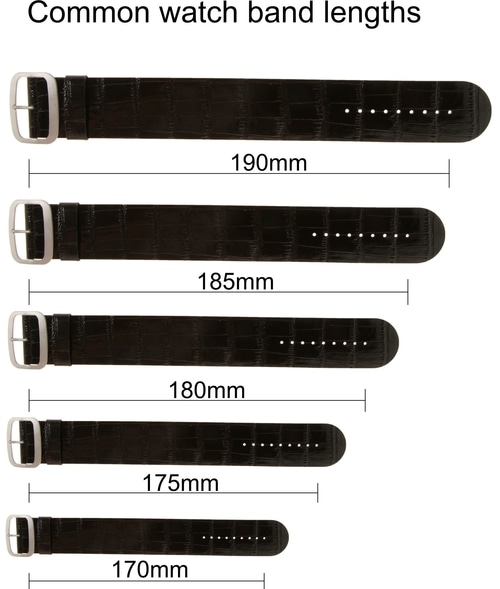
It is quite common that after buying a watch you may want to change the band or strap on it, or even get a second one to switch the look for different occasions. There are a lot of reasons someone may look into a new watchband, but the sizing could be an important factor.
See if Your Watch Has Different Sizes
The same as suit sizing, watch manufacturers will sometimes make different variations of watches and their straps. This could be in terms of a short, standard or long strap, the material, or even the width. Ensure you ask or enquire about any variants that the watch has as one may be a better fit for you.
4 Reasons You Should Have a Good Fitting Watch
Telling the time
This may sound a little obvious, but with how far watches have come, they are as much a fashion statement or accessory as they are a time-telling device.
Ensuring that the watch is sitting correctly on your wrist is important, so you can always easily tell the time without shuffling it around
Wear & Tear
Having your watch fit correctly reduces the wear & year on your timepiece and allows you to maximize the usage out of it. A poor-fitting watch will put a lot of stress on the bracelet and thus, it will need repair or maintenance quicker.
A loose watch can shuffle up and down your arm/wrist and create tension between the watch’s links and pins, whereas a tight watch puts pressure on these too but in a different way.
Looks Better
Having a watch that fits well will make it look significantly better, and make you look much more professional. A lot of people will notice a watch and it is a good way to inject some personality into an outfit, especially if you are restricted by what you wear at work.
Comfort
Once you have a watch that fits properly, you will be much more comfortable. If you are taking off your watch and there’s a big red mark and the watch’s indent in your skin, it’s probably too tight. Having the watch fit correctly will make you much more confident and comfortable.
Summary
This is just a quick crash course on watch sizing and determining what is too tight or too loose. Hopefully, now you have a better idea of making a watch fit your wrist perfectly, and have a newfound understanding of watch fitting.
Think of a watch like the third bowl of porridge in Goldilocks, you want it to be just right, but as the story goes, it’s only when we have had the wrong temperature (or size in this case) that we can work out what works for us.
To continue learning about watch fitting, check out our recent article on watch bands, which gives a detailed breakdown of how to find the right band or strap for your timepiece.
If you are interested in learning more about watches and the industry as a whole, we publish new watch content frequently and have a huge back catalog of blogs and posts to help watch veterans and newbies alike.

